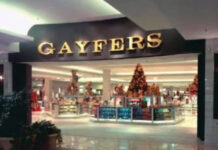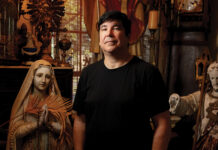
I became enamored with cars in the early 1960s, before ubiquitous air conditioning. As toddlers, my siblings and I would tool around Spring Hill with our mother in her small English Ford. It was something of a heat-induced daze, the sun blaring down on the car with its red leather interior. One of momma’s hands was used to grasp the ever-present cigarette, the other to wave to her friends, who seemed to be everywhere. Lacking seatbelts, baby seats or anything that would pass even the most lax safety requirements today, upon an imminent collision, momma would quickly place her arms across the bodies of the three or so children sprawled across the front seat.
In my childhood, cars were gigantic (not withstanding momma’s tiny Ford) and effusively decorated with chrome. They had shapes and names that evoked 1960s machismo – Electra 225, Thunderbird, Riviera. On the rare occasion an exotic European car would come to Mobile, I would go wild – “Look, Momma, it’s a Lamborghini!.” She barely knew what a Lamborghini was and could not have cared less. But she was patient and indulged my adolescent boy yearnings.
Parked behind two exceptional homes in Spring Hill were cars that left a lasting impact. The Dawson brothers were two Charlestonians of some repute who came to Mobile in the decade before the Civil War. They wanted to make a splash in their newly adopted town and ended up engaging in a kind of architectural one-upmanship that resulted in two of Mobile’s finest antebellum houses – Palmetto Hall and Carolina Hall.
Each brother bought acreage near the highest point in Spring Hill. John Dawson built Palmetto Hall. The house is set back from the road by a large and lushly planted front yard flanked by twin brick driveways that lead to a circular brick motor court. Because it was not visible from the road, Palmetto Hall always seemed vaguely shrouded in mystery. Adding to the mystique were the owners during my childhood, the Altmayers. They were a Richie Rich comic-strip version of the way wealthy people were supposed to live – a large white house with columns, a butler to answer the door, a grand black Rolls-Royce Silver Wraith always at the ready.
Daddy and Mr. Altmayer were old friends. Knowing I was drunk in love with exotic European automobiles, Daddy managed on several occasions to borrow the Rolls, ostensibly to take momma for a Sunday drive. He would then gather a dozen or so kids – us five and a smattering of neighborhood urchins – and take us on a joy ride around Spring Hill. The Silver Wraith was one of the last Rolls Royce models to feature running boards, metal skirts flanking the doors. With a couple of fearless children astride these platforms, holding on for dear life, we’d crisscross every part of the neighborhood, rounding curve after curve, usually too fast. When the ride was finished, I’d sit at the driver’s seat of the car as the massive black hood sprawled before me, the engine still ticking from its recent workout. The exquisite smell of leather mixed with the tactile feel of burled elm wood paneling throughout the car’s interior. Finally, after a couple of hours, the car would be returned to the owner, he oblivious to the ordeal to which the vehicle had just been subjected.
William Dawson, the other frère arriviste, built nearby Carolina Hall. The house is modeled after the landmark Miles Brewton House in Charleston. It has an imposing two-story neoclassical portico flanked by two identical wings. Well into the 1970s, the house was completely surrounded by thick woods of about twenty acres.
In my childhood, this estate was owned by Momma and Daddy’s close friends, Billy and Martha Perdue. I was never quite sure what Mr. Perdue did for a living, but they were presumed to be quite land rich. In addition to the acreage immediately around Carolina Hall, it appears he also owned tracts in Spring Hill, which by the 1950s were being carved up and sold off to form a neighborhood called Yester Oaks.
Martha drove a Citroën D20, the iconic car of post-World War II Paris with swooping aerodynamic lines and a futuristic look that set it apart from cars of the era. It had a unique hydraulic leveling system that the French carmaker insisted was the reason for its velvet-smooth ride. It would come to a stop light and then begin to hiss as it lifted its rear, like a female deer in heat. Instead of a normal horn, Martha had one installed that played La Marseillaise, which she would gleefully sound on any provocation, much to the delight of neighborhood children.
Today, Spring Hill is attempting to refashion itself into a “village.” Ugly gas stations and fast-food restaurants are being razed in favor of bank branches and law offices. Sidewalks are being added. Spring Hill Shopping Center has been redone, and does a booming business given its affluent clientele.
Momma and Daddy are long gone now, as are the Altmayers and the Perdues. So for me, the love of cars is tinged with a bit of sadness, epitomized by a poem by William Sharp:
“Deep in the heart of Summer, Sweet is life to me still
But my heart is a lonely hunter that hunts on a lonely hill.”






